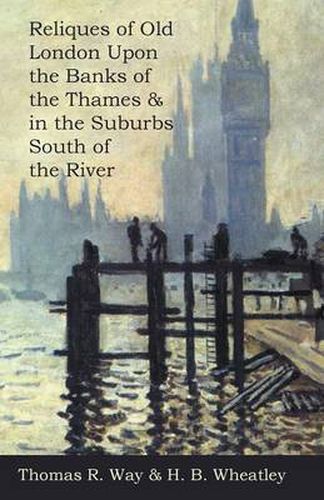Readings Newsletter
Become a Readings Member to make your shopping experience even easier.
Sign in or sign up for free!
You’re not far away from qualifying for FREE standard shipping within Australia
You’ve qualified for FREE standard shipping within Australia
The cart is loading…






This title is printed to order. This book may have been self-published. If so, we cannot guarantee the quality of the content. In the main most books will have gone through the editing process however some may not. We therefore suggest that you be aware of this before ordering this book. If in doubt check either the author or publisher’s details as we are unable to accept any returns unless they are faulty. Please contact us if you have any questions.
Originally published in 1899, this work details the buildings to be found on the banks of the River Thames during the 19th century. The following passage is an extract from its preface: ‘THE present volume dealing with the old buildings along the River banks, and a few of the more remarkable houses of the past in the Surrey and Kentish suburbs, completes this series of volumes of Reliques of Old London. Yet the whole collection of ninety-six drawings forms but a small proportion of the subjects available for study by lovers of the past, for in the choice of sul^e6ts, I have been entirely guided by my own feelings as to the picturesqueness of the buildings and their surroundings, and have passed over many places which are of more importance from an historical point of view; so that this little gathering makes no claim to any sort of completeness as a record of the old buildings standing in London at this century’s end.’ The River Thames takes its name from the Middle English Temese, which is derived from the Celtic name for river. Originating at the Thames Head in Gloucestershire, it is the longest river in England, flowing a total length of 236 miles, out through the Thames Estuary and in to the North Sea. On its journey to open water it passes through the country’s capital, London, where it is deep enough to be navigable for ships, thus allowing the city to become a major international trade port.
$9.00 standard shipping within Australia
FREE standard shipping within Australia for orders over $100.00
Express & International shipping calculated at checkout
This title is printed to order. This book may have been self-published. If so, we cannot guarantee the quality of the content. In the main most books will have gone through the editing process however some may not. We therefore suggest that you be aware of this before ordering this book. If in doubt check either the author or publisher’s details as we are unable to accept any returns unless they are faulty. Please contact us if you have any questions.
Originally published in 1899, this work details the buildings to be found on the banks of the River Thames during the 19th century. The following passage is an extract from its preface: ‘THE present volume dealing with the old buildings along the River banks, and a few of the more remarkable houses of the past in the Surrey and Kentish suburbs, completes this series of volumes of Reliques of Old London. Yet the whole collection of ninety-six drawings forms but a small proportion of the subjects available for study by lovers of the past, for in the choice of sul^e6ts, I have been entirely guided by my own feelings as to the picturesqueness of the buildings and their surroundings, and have passed over many places which are of more importance from an historical point of view; so that this little gathering makes no claim to any sort of completeness as a record of the old buildings standing in London at this century’s end.’ The River Thames takes its name from the Middle English Temese, which is derived from the Celtic name for river. Originating at the Thames Head in Gloucestershire, it is the longest river in England, flowing a total length of 236 miles, out through the Thames Estuary and in to the North Sea. On its journey to open water it passes through the country’s capital, London, where it is deep enough to be navigable for ships, thus allowing the city to become a major international trade port.